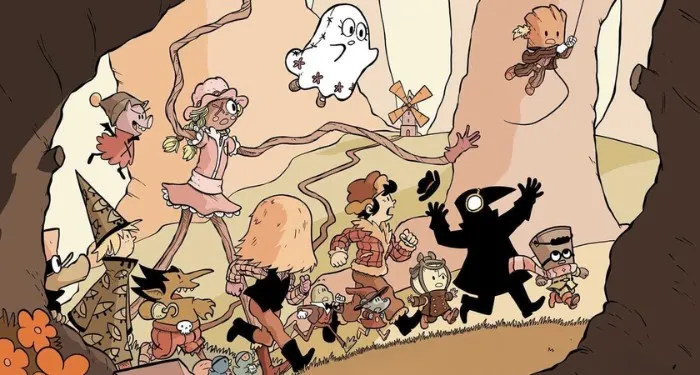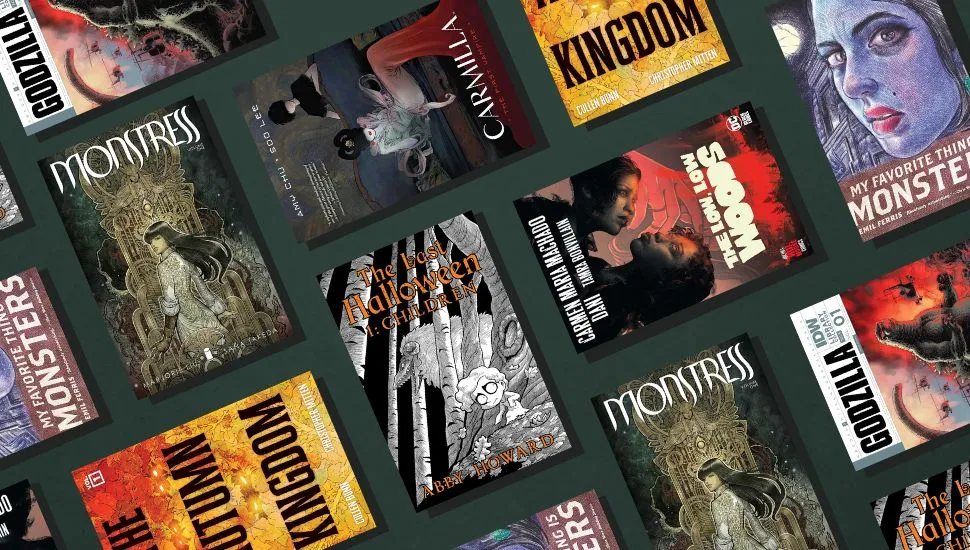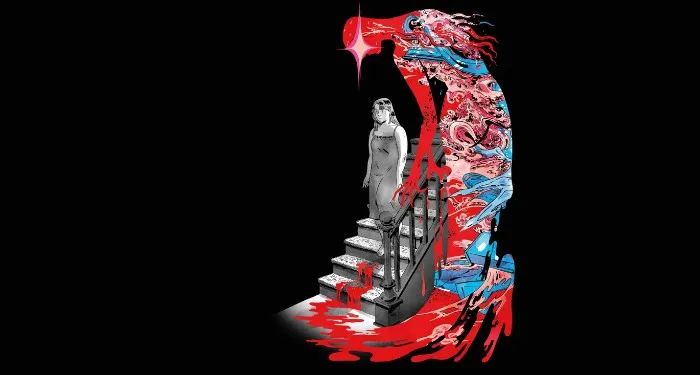On the evening of August 30, 1918, an assassin shot Lenin twice as he was leaving an armaments factory. The assailant was twenty-eight-year-old Fanny Kaplan, a member of the Socialist Revolutionaries, a rival party to the Bolsheviks. Kaplan was furious that Lenin had dissolved the Constituent Assembly (the governing body) to prevent duly elected Socialist Revolutionaries from taking power. She turned herself in, explained her reasons, and refused to name her accomplices. Lenin survived. The assassination attempt became the official pretext for the Red Terror, a violent campaign against non-Bolshevik parties. The secret police summarily executed more than six thousand Soviet citizens in the first two months after the shooting. Kaplan was among the first to be killed without trial.
In the early 1980s a Soviet economist went out into the field to study the nation’s factories and collective farms, and published a devastating report. The highly centralized Soviet economy was on the verge of collapse. Bureaucrats in Moscow couldn’t manage the production and distribution of food and goods across the vast territory. Workers were demoralized and cynical: the animating dream of building communism together had been crushed by corruption and poverty. The economist, Tatyana Zaslavskaya, was a committed socialist who believed that it was “necessary and possible” to improve the Soviet Union’s troubled system. She stressed that the economy needed not reforms but a thorough restructuring—perestroika—from the ground up. She went on to become an informal adviser to Gorbachev, who found her word useful.
These two women, Kaplan and Zaslavskaya, whose stories appear in Motherland, Julia Ioffe’s wide-ranging account of the past 150 years of Russian history, were living out the Soviet ideal for its citizens: women, like men, could be revolutionary actors on the world stage or highly specialized workers lending their talents to their country. Neither Kaplan nor Zaslavskaya had been concerned with the rights or plights of women—why would they be, when gender equality was already enshrined in law? The Soviet experiment was built on a vertiginous, alluring idea: that gender equality can spring from a source other than feminism. Women would bypass the divisive process of group advocacy, avoid making adversaries of men, and instead simply be equal, joining the collective socialist struggle on the same terms as male comrades, becoming part of a movement whose belief in universal human equality was so powerful that no one would be exempt from its logic.
Ioffe, a journalist whose family immigrated to the United States when she was a child in the early 1990s, is the daughter, granddaughter, and great-granddaughter of women who were doctors in Russia when such a thing was still exceedingly rare in the United States. But when she returned to live in Russia as a reporter in 2009, she was surprised to find a country estranged from its early, pioneering ethos of gender egalitarianism. To most post-Soviet Muscovites she met, feminism was something Western, slightly risible, and fundamentally un-Russian. As she dug deeper into Russian views and policies on gender, Ioffe found a Soviet history that runs almost in reverse to the Western one, beginning with a comprehensive formal equality—delivered by fiat—that was eroded as the twentieth century wore on.
Motherland, complex yet swift-moving, covers politics, law, and cultural attitudes over a century of history that includes the catastrophes of war and domestic persecution. Ioffe brings together the stories of her own female relatives along with those of many other Soviet women; some are prominent (revolutionaries, wives of party leaders, well-known dissident writers), while others are ordinary citizens whose accounts are preserved in memoirs, interviews, and oral histories. She focuses mostly on European Russia, but her family story begins in Belarus and Ukraine, where all four of her great-grandmothers, Jews confined to the Pale of Settlement, were born at the turn of the twentieth century. These great-grandmothers were teenagers at the outbreak of the revolution, “the banging overture of the Soviet experiment crashing into their young lives.”
As young women of modest rural backgrounds, Ioffe’s great-grandmothers stood to benefit greatly from the Bolshevik program—and in many ways they did, owing their educations and good jobs to the Soviet government’s version of egalitarianism. But in order to get their educations and keep their jobs they had to survive the gruesome pogroms of the civil war years, Stalin’s Terror, the Nazi occupation of Ukraine, the Doctors’ Plot (a wave of postwar arrests and firings targeting Jewish physicians), and the lingering menace of a police state that continued to suppress dissent even after Khrushchev’s thaw.
How do you assess an ambitious and humane program of gender equality within a wider regime of mass murder and repression? Some of Ioffe’s female relatives owed their lives to split-second decisions about which way to flee the oncoming German army, a situation they might not have faced if Stalin had not decimated the officer corps of the Red Army in the years preceding the Nazi invasion. If these women later went on to become doctors and chemists, are they best understood as the lucky beneficiaries of the Soviet experiment? Or merely its least unfortunate victims?
In the nineteenth century Russia had a feminist movement similar to that of other European countries. Debates on the emancipation of women occupied several generations of dissident intellectuals, and men as well as women advocated for women’s legal rights, education, and participation in public life and the professions. The intelligentsia read the work of the gender egalitarian and utopian socialist Charles Fourier in the 1840s and John Stuart Mill’s The Subjection of Women in the 1870s, by which point they had successfully pressed the tsar to establish separate gymnasiums, separate university lecture courses, and a medical school for women.
It was only to these kinds of liberal reformist efforts that Russians applied the term “feminist.” Socialists and populists—increasingly numerous and radical toward the end of the nineteenth century—never called their own gender egalitarianism feminism. They dismissed the feminist groups for serving what they saw as primarily bourgeois interests, and they rejected feminism generally because the idea of advocating for women went against the grain of their universalism. The Social Democratic Labor Party (which later split into Mensheviks and Bolsheviks) had always called for gender equality and opened all of its political activities and meetings to women, but it saw no point in further outreach or accommodation. Women, along with the rest of the working class, would be freed by a revolution that eliminated private property and gave equal rights and obligations to all citizens.
Many women did participate in radical anti-tsarist activity. The Bolsheviks in particular were known for having women in party leadership, including Lenin’s lieutenant Inessa Armand; his wife and fellow revolutionary, Nadezhda Krupskaya; and the theoretician Alexandra Kollontai, who went beyond political economy to write essays about culture, psychology, and the inner lives of women with an intimacy that anticipates Simone de Beauvoir’s The Second Sex.
But socialist women, like the feminists, also tended to come from the upper and middle classes. Working-class women largely avoided politics—mainly because they had no time but also because they didn’t feel they belonged at political meetings or because their husbands disapproved. Those few who had a taste for politics were being won over by the feminists, who by the early 1900s had become more attuned to cross-class alliances. They were gaining the support of working-class women by finding them where they lived and worked and addressing their immediate needs for food and decent shelter.
Kollontai, galled by the feminists’ success in organizing poor urban women, spent years trying to convince her comrades that they should speak directly and specifically to the needs of women in order to win their support. It turned out that even among socialists someone did have to advocate for women: Kollontai continued to reject feminism all her life, yet she came up with a platform of rights and services for women—including equal pay and guaranteed maternity leave—that “became the blueprint for Soviet family policy,” Ioffe writes.
When they seized power, the Bolsheviks gave voting rights to all adult citizens regardless of gender, ethnicity, or religion. Universities could no longer exclude women, and all trades and professions were open to them. Every citizen was required to work and received the same minimum wage regardless of gender. Divorce became easier to obtain. Spouses had equal rights in marriage, divorce, and property ownership. Maternity hospitals were free and open to all regardless of social position or marital status. Women were guaranteed eight weeks of maternity leave before and after giving birth. Ioffe describes a 1921 leaflet addressed to “Women Workers of All Countries,” announcing that “Soviet Russian women were no longer exploited. When it came to working women, the pamphlet claimed, Soviet Russia was now ‘a fairy-tale country.’”
The revolution put the Soviet Union far ahead of Europe and the US in the rights and status of women—and the Bolsheviks went further still. They led a campaign to rapidly expand literacy, making elementary education compulsory and eliminating single-sex education. By the 1970s the Soviet Union had the highest female literacy rate in the world—virtually all women, along with men, could read. On the eve of World War II, women made up 45 percent of the workforce. The rapidly industrializing country’s high demand for scientists and engineers led to the quick establishment of technical schools, university programs, and scientific research institutes across the Soviet Union. By midcentury the Soviet Union had much higher rates of women in scientific and medical fields than the United States or other parts of Europe. About 40 percent of Soviet doctorates in chemistry went to women by the early 1960s. Medicine, meanwhile, had become a feminized profession: 70 percent of Soviet doctors were women.
Perhaps nowhere was the change in women’s status, and the commitment to gender integration, more pronounced than in the Soviet military. Women were recruited to fight for the Bolsheviks in the civil war; two years into the war there were some 66,000 women serving in the Red Army, about 2 percent of the force. Though most were in traditionally female roles, such as nurses and administrators, some were machine gunners, sappers, cavalry officers, and snipers. Others did reconnaissance so skillfully that Lenin opened an academy in Moscow to train more female intelligence operatives.
For over two decades the Soviet government took seriously the idea that it needed its women as well as its men to defend the country. In the 1930s girls and boys alike were required to study military history, learn to use gas masks, and be able to distinguish between different types of bombs. The Communist youth league, Ioffe notes, required women to demonstrate their ability to “shoot a rifle, throw a grenade, jump off a parachute stand, read a topographical map, and demonstrate basic knowledge of a plane, car, tractor, or tank engine.” Paramilitary training was a requirement for most university degrees. Ioffe writes that her great-grandmother “had to pass classes in air and chemical defense to become a pediatrician.”
When Hitler invaded the Soviet Union in 1941, tens of thousands of young women swarmed recruitment offices. Eventually 200,000 joined the air force. The pilots of an all-female night bombing regiment were called the Night Witches by incredulous Germans who witnessed their nearly 24,000 combat missions. The sniper Lyudmila Pavlichenko became famous for her 309 confirmed kills (making her one of the deadliest snipers in the war), but she was far from alone—two thousand female snipers fought in the Red Army. “By war’s end,” Ioffe writes, “women made up 8 percent of all Soviet military personnel,” including hundreds of thousands in active combat.
But Stalin had always had more conservative views of women’s rightful place than Lenin. After the war, when female soldiers were no longer urgently needed, he denounced feminism as bourgeois. This was the usual socialist line, but he now made it a pretext for dismantling some of the egalitarian measures that the Soviet government itself had put in place. Women were no longer allowed to serve in combat; only boys received paramilitary training in school and university; home economics was reinstated for girls. Though the women of the Red Army fought honorably and sometimes heroically, they were rarely mentioned in official military histories or public commemorations of the war.
While every citizen was expected to work for the Communist state on an equal basis, regardless of gender, no one seriously entertained the logical corollary: that housecleaning, cooking, and childcare might also be shared on an equal basis. In 1919 a Pravda editorialist had boldly declared that “the fewer purely female or purely male responsibilities in human society,” the better for an egalitarian ethos. But he was writing in praise of female soldiers, not men taking care of small children. Even radicals couldn’t quite imagine domestic labor as the neutral complement of paid labor, a double set of duties to be divided evenly across the population. It was instead the troubling remainder of women entering the workforce: What was to happen to the kitchen and nursery if women left them unattended?
In her essay “Notes from a Trip to Russia,” Audre Lorde recalls meeting with a guide in Soviet Uzbekistan in 1976 who told her proudly that there was no difference in status between men and women in the USSR, and described the free day cares and kindergartens in Moscow and Tashkent. Lorde suspected “there was a little more to it than met the eye,” and asked the guide if “men are encouraged to work in the kindergartens to give the children a gentle male figure at an early age.” The guide was silent for a moment and then said no. “We like to believe that when the children come to the kindergarten they acquire a second mother.” The state may have taken charge of daytime childcare, but the institutions remained stubbornly feminized, a sphere of relatively low-status work drawing women into gender-segregated occupations even when other work was theoretically available to them.
In any case, many of the services promised to women never materialized. It took decades to establish enough day care centers for the population, leaving many women relying on grandmothers or scrambling to find a neighbor who would take some cash to look after a child. The housing constructed at record pace in the postwar years consisted almost entirely of small apartments designed for nuclear families or (as was often the case) very cramped multigenerational groups. Private kitchens were appreciated by women weary of negotiating with random cohabitants in communal apartments, but those kitchens cemented their lonely roles as family cooks. That women were responsible for the entire complement of domestic labor—cleaning the house, cooking meals, and taking care of children after hours—remained an unshakable conviction among the public even as nearly every woman below retirement age joined the workforce and put in a full day of paid work.
This flagrantly irrational division of labor became one of the most remarked-upon facts by Western visitors to the Soviet Union: their women really did work alongside men! But then they came home and did all the work of housewives! Of course, there were plenty of women in the US and Western Europe in the cold war era who worked for pay and then worked the unpaid “second shift.” But in the Soviet Union it was a mass spectacle: almost in lockstep, an entire nation of women worked the equivalent of two jobs while their brothers and husbands worked only one.
Ioffe’s grandmothers both raised children in the postwar decades. Her paternal grandmother, Khinya, was the head of the chemical department at the water plant where she worked. She arrived at her lab by eight in the morning after taking her children to school; she left at five to pick them up, stopping on the way home to buy groceries, then cooked the family dinner. Early in their marriage her husband, Yasha, had helped Khinya with some of her housework, but when his mother found out she called Khinya and threatened that “if she ever heard of her boy doing women’s work again,” she would “make him leave her, kids or no kids.”
Ioffe’s maternal grandmother, Emma, a recent medical school graduate, struggled with a husband who was incensed that their baby cried at night. She temporarily moved back in with her own mother for some relief from her household duties. By the time the baby, Olga, Ioffe’s future mother, was five years old, she had learned to make simple meals for her father. “Dad,” read one of the many awkwardly scribbled childhood notes in the family archives, “I’m going outside to play. Lunch is on the stove.” When her father died in his sleep at age forty-seven, while she was a teenager, Olga felt she had lost a “ghostly but exacting roommate,” Ioffe writes.
You might think that the unequal division of labor would at least help husbands, but men were not clear winners in this system. Their health was poor, and their alcohol consumption surged in the postwar era. Their life expectancy was far shorter than women’s. Generations of men bore the brunt of police state brutality—the mass arrests and executions of Stalin’s Terror, the deadly prison labor system, the reckless deployments of soldiers, the hazing culture of the military, the murderous disregard for worker safety. Meanwhile, the stagnant wages and disillusionment of the 1970s made it increasingly hard for anyone to “self-actualize” at work, as Ioffe puts it, and work was the main pillar of male identity. Ioffe speculates that, disconnected from daily household responsibility and therefore intimacy with their children, many men actually suffered from being “marginalized figures in their families”—“they came home from work mainly to eat and sleep while their wives and children had entire lives without them.”
The Soviet Union’s pledges to women were only some of the many promises the country could not fulfill. A social gulf developed between those with the most education and those with the least, as did a considerable material gulf between residents of the impoverished countryside and those who lived in large cities, to which the best food and goods were diverted at the expense of rural areas. Ioffe begins her book with the premise that her doctor foremothers were ordinary citizens who happened to benefit from the Soviet system of coeducational opportunity. But it’s only the first generation who can strictly be called ordinary—the ones who followed were children of doctors.
As Ioffe writes, medicine had, by the time her mother was applying to medical schools in the mid-1970s, “become a hereditary profession, with the daughters of doctors far more likely to become doctors themselves.” When Olga was denied entry to a school with a strict Jewish quota, her mother asked around and found a school in Smolensk that admitted a higher number of Jews. When Olga finished her medical studies, her mother drew on her connections to find her a job at an exclusive clinic near their Moscow home. Despite its advancements in literacy, education, and relative income equality, the Soviet Union could not prevent the formation of layers of elites who used whatever footholds and connections they had to help their children find the best possible jobs, apartments, and medical care.
Men’s health only got worse after the dissolution of the Soviet Union. Russian men’s drinking was especially prodigious during the 1990s and the turn of the twenty-first century, and much of their poor prognosis was thanks in one way or another to alcohol consumption. Men’s life expectancy dropped from sixty-six in 1968 to fifty-eight by 1994, while the gap between men and women opened from eight years in the late 1960s to thirteen years in the early 2010s.
Russia’s swift, unregulated switch to a market economy in the 1990s left millions of people who had had good or decent jobs unemployed. In a pattern familiar well beyond Russia, women tended to respond by taking whatever new jobs they could find, however menial, while men tended to refuse lower-status work and remain unemployed. A small number of men (as well as women) were able to adapt and ride the waves of the new economy to middle-class stability, but many more struggled.
These facts were so familiar to Russians that when Ioffe moved to Moscow in 2009, she found a public that couldn’t imagine why feminism was necessary when women already had civic equality while men were the ones dropping out and drinking themselves to death. It was obviously not an environment in which one could speak credibly about male privilege, even though women were in fact sidelined from the most lucrative and powerful occupations and casual sexism was rampant. “Why do you keep talking about women? We have a problem with the men!” is how the feminist sociologist Elena Zdravomyslova summed up the public response to any critical discussion of women’s status in the new Russia.
Ioffe met numerous well-paid professional women who were preoccupied with manipulating prosperous men into marriage. Classes and self-help books advised single women on how to play it cool, avoid nagging, and give better blow jobs in the hopes of wrangling a proposal that would allow them to give up paid work and become housewives. Weary of their work obligations and unwary of the prospect of widespread female financial dependence on men (a type of social order they had never experienced), many women were happy to take any off-ramp from work available, encouraged by a flourishing pop ideology of sex difference that seemed to have survived the seventy-year Soviet experiment. Women tell Ioffe things like “Role reversal is what has led to women’s unhappiness” and “If there’s a man, then the [Russian] woman will always prefer to be number two.” Two of her mother’s friends, formerly doctors, were delighted to reveal that they hadn’t practiced medicine in over a decade.
This kind of thing drives Ioffe crazy. She had never been much taken with the feminism of her friends back in New York (“As far as I could tell, American women believed they had invented feminism, but their feminism seemed to encompass only sex and reproduction”), yet she is dismayed by the lack of feminist consciousness she finds in Russia, and equally frustrated when, in the late 2010s, the young online cohort picks up American phrases like “toxic masculinity.” “It was like watching French culture come to Russia in the eighteenth century,” she writes. “Something that made sense in an American context refracted itself through the Russian lens to become a comically warped derivative.”
But it’s not entirely clear why these terms are ludicrous in the Russian setting. It is of course galling that the US would get naming rights to any patriarchal phenomenon when Russia has a strong tradition of its own, but it doesn’t seem surprising that “toxic masculinity” would have some resonance for Russians. And there’s a reason these terms would continue to flow from the West: Russia hadn’t developed its own strains of feminist cultural criticism, while the West had a decades-long head start. Ioffe is vague on American feminism, reducing it to a handful of friends in New York and one annoying editor at Glamour, a magazine perhaps miscast as a feminist organ. She can’t speak to the lines of influence between East and West and therefore can’t quite complete the tale of how the fight for gender equality came to seem like a Western import in the country that was once its standard-bearer.
Feminists of the Western left like Beauvoir, Angela Davis, and Lorde were warmly invited to the Soviet Union on official visits—not for their feminism, which the Soviets studiously ignored, but for their criticism of capitalism and Western imperialism. Meanwhile, the women’s liberation movements of the West had rediscovered Kollontai and marveled at her prescience.
The Western movements were soon broaching the kinds of social problems that the Soviet Union had never been able to acknowledge in the absence of free public discourse: sexual double standards, sexual violence, the division of domestic labor, and the whole raft of stereotypes and assumptions of female inferiority that justified male domination. In the US, feminism sprawled into many factions, produced cultural and historical analyses of gender, engaged in legal reform, became self-critical under the influence of queer and postcolonial theory, effloresced in art and music, and worked its way into institutions while continuing to spawn waves of activism and internal debate. It was a wildfire big enough to make its own weather, and as soon as Soviet archives were opened to the public, Western feminists pored over them and published articles on Soviet gender and family policy, some of which Ioffe consults for this book.
Ioffe sometimes finds herself in the classic posture of a nineteenth-century Russian intellectual: she chafes at the overweening (feminist) West while occasionally throwing her hands up at the backwardness of (nonfeminist) Russia. One way out of this position would be to take seriously what the aspiring Russian housewives are telling her. Yet Motherland is also a work of broadly liberal American feminism, and you can see in it a certain characteristic rustiness at testing its premises and anticipating its skeptics. A reader might reasonably ask (and not only rhetorically): If so many women Ioffe meets are convinced that Russia doesn’t need feminism, why should we lament Russia’s lack of feminism? Or, from a different angle: What would a feminist movement have to look like in order to move Russian women?
In late 2011 a protest movement emerged when Putin announced that he would run for an unconstitutional third term as president. Over the next two years tens of thousands of protesters showed up at rallies across the country, the largest show of popular discontent since 1991. Independent media and public discourse were still more or less free at the time. Opposition candidates spoke to crowds, and activists protested and posted videos online.
Pussy Riot, a collective of young women styled as a punk band, seemed to be a new idiom of Russian female protest: not long-suffering mothers and wives speaking from their moral high ground but young, irreverent rebels who wanted to save their country’s future. Pussy Riot staged anti-Putin actions in various public locations in Moscow. The one that got the group arrested took place in the Cathedral of Christ the Savior, effectively the state cathedral of Russia, where Putin and his associates attend nationally televised Easter services. One February morning in 2012 four of its members entered the church disguised as worshipers, slipped on balaclavas, stepped onto the sanctuary platform, and performed (a cappella—the guitarist had been detained by security) their anticlerical anthem “Punk Prayer,” whose eight shouted couplets condemn the church’s craven collaboration with Putin as well as its sexism and persecution of queer people. The chorus implores the Virgin Mary to “chase out Putin” and “become a feminist.” It’s perhaps not surprising that when Vice asked the group about their feminist influences, they cited the Riot Grrrl movement and a Western reading list that included Beauvoir, Shulamith Firestone, and Judith Butler.
After a short, highly publicized trial in 2012, Pussy Riot members were sentenced to two years in a penal colony—a heavy verdict for a nonviolent protest. The trial marked a new period of more forceful repression of Putin’s opposition. Protesters were jailed and killed; independent journalists, feminist and queer activists, and human rights advocates were arrested or forced into exile. Small demonstrations over minor local issues met with police batons, punches, and detentions. “The signal was quite clear,” writes Ioffe. “Any kind of peaceful protest would be met with unfettered and ferocious violence.”
In 2017 Putin passed a law to decriminalize domestic violence. Despite the growing danger of dissent, the public engaged in a widespread critical discussion of domestic abuse, including multiple hashtag campaigns of personal stories on social media, interviews with battered women, and news coverage of the most flagrant cases. A move to roll back the law, led by the highest-ranking female member of parliament, had tremendous public support: thousands again marched in Moscow, and more than 700,000 Russians signed an online petition in favor of recriminalizing domestic violence—“an unusual burst of democratic activity in a country that was rapidly closing avenues for any kind of political expression,” Ioffe writes. But the reform bill failed in parliament. Alyona Popova, an activist who started one of the hashtag campaigns, told Ioffe that it felt like an omen that Russia was headed toward “a place of total violence.”
With the invasion of Ukraine, Putin continued the Soviet tradition of treating Russian men as cannon fodder. In the first year of the war some 200,000 ill-equipped soldiers were killed or wounded. Hundreds of thousands of men fled the country to avoid the draft. Putin now offers volunteers a salary more than two and a half times the national average, plus enlistment bonuses, pensions, debt relief, discounted mortgage payments, and sizable family compensations for injury or death. It’s an irresistible bounty for many Russian men who can’t achieve a middle-class standard of living at their low-paid civilian jobs.
But there is a group of men still being forced to serve involuntarily: the reservists mobilized for service in 2022, originally some 250,000, whose tours have been extended indefinitely. In 2023 their wives formed a channel on Telegram called “The Way Home,” which has had as many as 36,000 members, to press for their return. The wives, many of them now effectively single parents and primary breadwinners, advocate for their men at considerable risk to themselves. The Way Home began with a narrow mission: to demobilize nonvolunteer fighters and bring them home. Its members were not initially critical of the war itself; lately they have taken a more aggressive line against Putin and the invasion, but their gestures remain conservative. Every Saturday members put on white headscarves and lay red carnations at local war memorials. In their standoff with Putin we can see a variation of the old Soviet verities: the autocrat is brutal, the men are victimized, and the women handle everything back home.



















 English (US) ·
English (US) ·